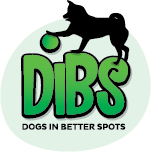Training – Give your Pooch the Gift of Training!
Training is good for all dogs, regardless of age, or their current skill-set. If you and your dog are new companions, training is the best way to help you both speak the same language. Your dog sees this time as a bonding time, but they also learn to understand their people. If you have kids, make the training a family event. It is very important that your dog experiences consistency from everyone. Worth noting – the training is just as much (or more!) for the person than the dog. You will learn how to get the most from your “communication” with your new family member.
Types of training:
• Basic: Most pet stores have basic training classes. These are perfectly good for teaching your dog the basics.
• Trainers: Will come to your home. This may be more expensive, but can be a great investment. This is personalized, hands-on training, specific to you and your situation. The trainer can see your dog in their environment and can make suggestions for your home, your dog, and you.
Exercise
Your dog needs exercise for so many reasons. It’s bonding time with you. It’s routine. It’s an outlet for stress. A morning walk and an evening walk are a must. If you expect to be out for 5+ hours, hire a dog walker to break up their day. A great alternative is doggie daycare – even if just once a week!
Routine
Provide your dog with basics that they can count on. In time, they will learn to trust and know that you will come home at 5:30 every day. They will know that their walk happens every day at 7 am. Stability and routine can remove stress that they may get from not knowing what happens next.
Toys
Ensure your dog has “something to do”. They may have a box full of toys that they play or cuddle with. Perhaps a Kong filled with peanut butter or a treat ball will give them something to work on during the day.
A Happy Place
Ensure your dog has a place that they can call their own. Dogs will seek out a spot to give themselves a time-out when they need it. This space may be an open crate, a dog bed in a quiet room, or their own special hiding spot. Ensure your dog can get to this spot whenever they need to. Their ability to manage their emotional needs will help both you and your pooch.
Low-Energy Good-Byes
Don’t make a fuss when you leave for the day. If your dog senses a change in your tone or words, it will cause concern. Over-stimulated good-byes can create the dog to learn separation anxiety. Separation anxiety can be a big problem with some dogs: you don’t want to artificially create these emotions. If your dog does begin to show signs of stress when you leave, please research “separation anxiety” and hire a trainer to come to your home. It is important to do this as soon as you recognize that there is an issue. The sooner you help your dog manage this, the better chance you have of turning it around. When you return home, keep energy low. The messaging is to ensure alone time can be happy time!
